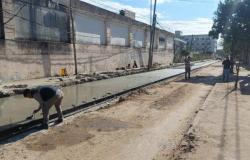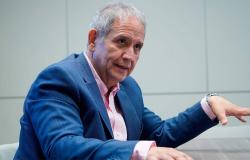The World Economic Forum presented its most recent Global Gender Gap Index 2024, in which it compared the current state and evolution of gender parity and He detailed that this year’s results, the scale and speed of the process are insufficient to achieve gender equality by 2030.
(See: Work flexibility, among the requirements most sought after by professionals)
And the records maintain that one of the biggest gaps is the participation of women in the labor force, a factor that has shown a slight improvement, although places in context the need to form equitable care systems.
In Colombian matters, the document allows us to detail that The country had a slight decline in the gender parity ranking, Because for this edition the nation ranked number 45 of the 146 economies evaluated, closing that gap by 74.6%.
(Read: The jobs in Colombia that are being paid the most with cryptocurrencies)
If compared with the results of the previous edition, Colombia dropped three positions, since in 2023 it had ranked 42nd with a score of 75.1%.
It is worth noting that the index compares gender parity in four key dimensions, one of the most important being economic participation and opportunitiesfollowed by educational achievements, health and survival and finally political empowerment.
(See more: These are the universities in Colombia with the highest level of employability, according to ranking)
In the case of Colombia, this year the country stood out in the division of educational achievements, pues obtained the maximum score, which was 100% and ranked number one among the 146 evaluated.
Gender iStock
Detailing the categories in education, which are primary, secondary and tertiary enrollments, the country had a score of 100% in each one, as well as the literacy rate, which reached 100%.
(Read more: Requirements to apply for the 20 thousand work visas in the US for Colombians)
Other categories that recorded performances above global averages were health and survival. For this, Colombia closed its gap by 97.5%, ranking 51st among those evaluated.
Now, regarding opportunities and economic participation, it had a score of 70% in this edition, being in position number 71 in the ranking. In that sense, The country has a gap to work on at this point and that is wage equity in similar jobs.
(See also: Did you know about unemployment benefits? So you can apply for it and receive almost $2 million)
According to the report, in this subcategory the country had a score of 58%, which took it to position 105, followed by workforce participation that reached position 103 globally with a score of 68%.
The worst national indicator is political empowerment, according to the results The country only reached 30% of closing that gap, although it was ranked 47th. Within this point, they detail the national inequality regarding a female head of state, since this work has never occurred in the country.
(Read: Unemployment in Colombia remained at 10.6% for April)
Gender iStock
According to the World Economic Forum in Latin America and the Caribbean lGender parity reached 74.2%, being one of the biggest jumps since the first edition of the report in 2006 and reducing its gap by at least 8.6 percentage points.
(Read more: 82% of companies in Latin America struggle to find ‘freelancer’ workers)
“The region achieved its highest economic parity score to date, of 65.7%, a slight rebound of 0.5 percentage points compared to 2023, as a result of strong parity in labor force participation and professional roles”they say.
They add that educational achievement and health and survival remain stable at 99.5% and 97.6%, respectively. While although Most economies show parity in literacy and school enrollment, disparities in access persist.
(See: Find out which soft skills are most in demand by companies)
At 34%, the region has the second highest Political Empowerment score of all regions, having reduced the gap by more than 22.4 percentage points since 2006.
Gender iStock
For this edition, the global gender gap in the 146 countries included in the study was at 68.5%, being 0.1 percentage points lower than last year’s figure of 68.6%.
(See: The remote jobs with the greatest demand by companies)
In that sense, the report stated that although no country has achieved total gender parity, and97% of the economies included in this edition have closed more than 60% of their gapcompared to the 85% referenced in 2006.
In addition, Iceland (93.5%) returned to first place and has led the index for a decade and a half. It also remains the only economy to have closed more than 90% of its gender gap.
(Read also: Better salaries or flexibility? This is what Colombians prefer when looking for a job)
Now, according to the World Economic Forum, the current global economic and regulatory context is shaping the results of gender parity, although The economic prospects of women and girls are threatened by continuing recessions and protracted crises.
“While the adoption of economic policies to promote gender equality has increased overall, there are marked differences between regions not only in adoption but also in resources and implementation. Raising the resources needed to close the gap requires a fundamental mindset to recognize gender parity as a driver of new, high-quality growth.”, they assure.
(See more: The great challenges facing the labor market in Colombia due to aging)
They conclude by highlighting that LinkedIn data shows that Women’s representation in the workforce remains below that of men in almost all industries and economies, and women represent 42% of the global workforce and 31.7% of senior managers.






